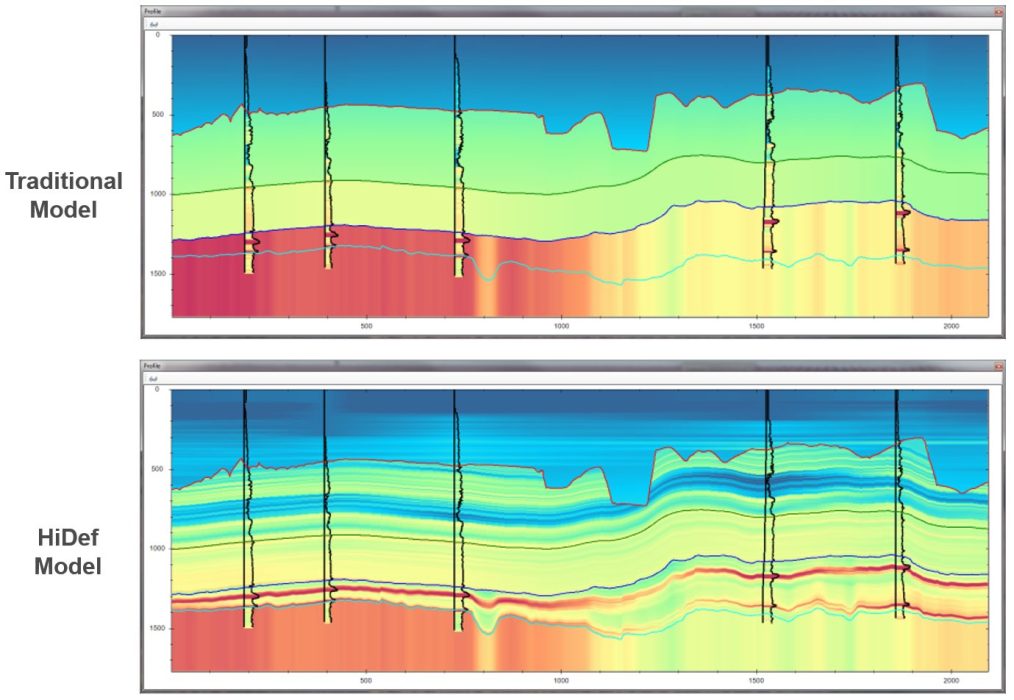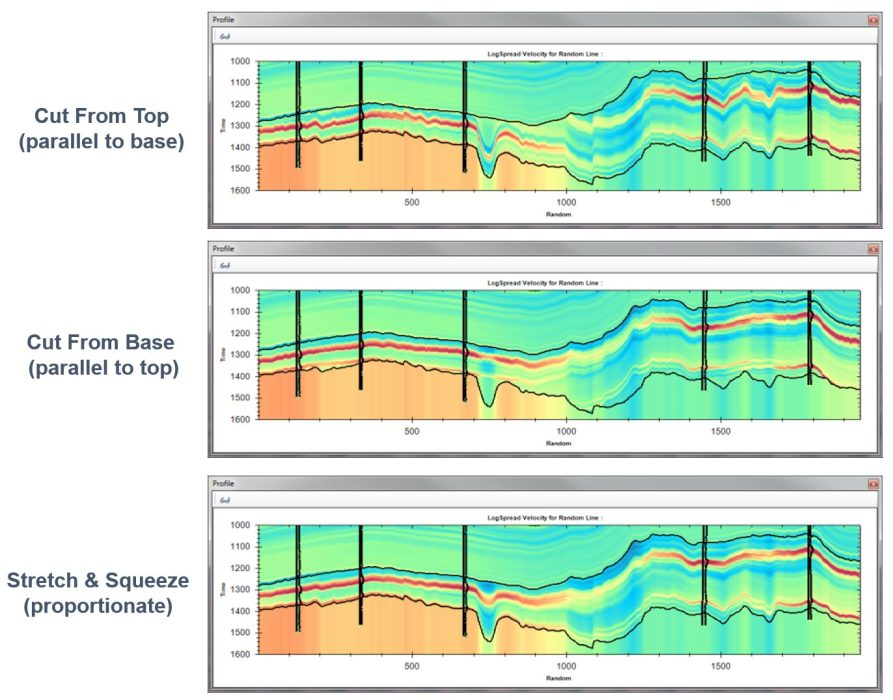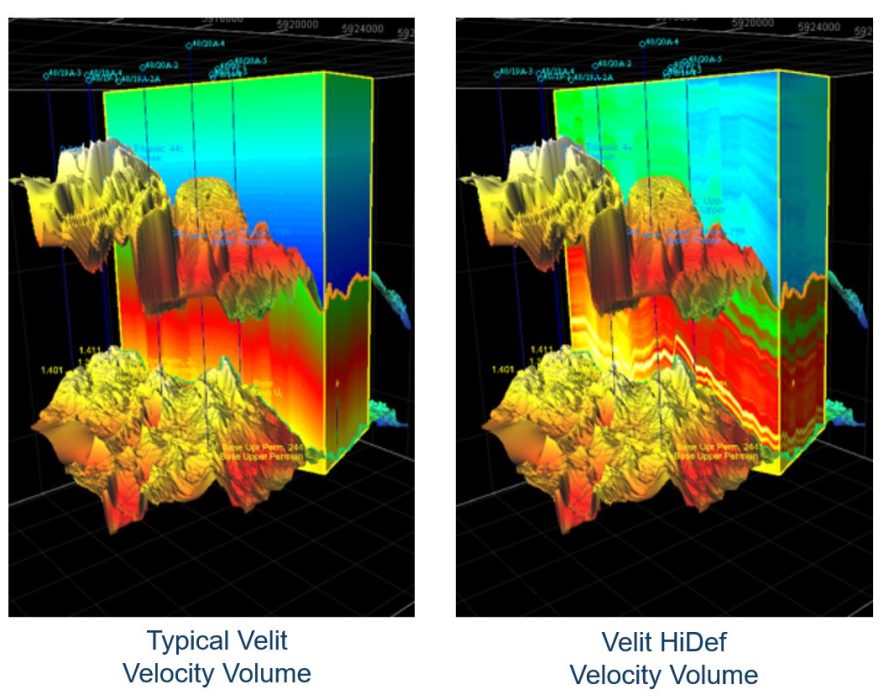Velit contains the HiDef tool which will enable you to upscale your velocity volume to contain velocity detail at log level resolution.
How Does It Work?
HiDef does this by taking a background velocity model and adds the character of the sonic logs to that volume in a geological and geophysically consistent way. The resultant velocity volume will still be accurate for depth conversion, tie the wells and retain the velocity gradient in the low frequencies of the volume, but with log scale detail. You can note that it doesn’t simply spread log velocity data between wells. It uses the velocity trend in the input volume to propagate well velocities and geological constraints can be provided by the tool to ensure the volume you generate reflects the seismic appropriately.
HiDef uses kriging to distribute sample values from the sonic logs between layers, taking into account the background trend from the supplied velocity model and the geological layering defined in each layer. The detailed velocities are used to depth convert each layer, and a residual correction computed to ensure the velocities tie the formation tops at the wells. If data is unavailable over an area it will blend the volume with the existing volume and Wells and layers can be individually selected & controlled. The residual error correction is then applied to the velocities using the same method as the initial distribution of sonic velocities to ensure a self-consistent volume.
Geologically Consistent Models
The geological behaviour of each layer is defined by assigning each layer one of three spread types: Cut from Top, Cut from Base or Stretch and Squeeze. When the process is run the layers are flattened onto a datum, processed and then returned to the original layer structure.
Here you see an example of the same profile with the geological behaviour of the middle layer having been changed within HiDef
Cut from Top –The layers remain parallel to the base but cut at the top. Here the red velocity is drawn down to be parallel to the base of the layer.
Cut from Base – The layers remain parallel to the top but cut at the bottom. here the red velocity is remains parallel to the top of the layer.
Stretch and Squeeze – A Well will be squeezed or stretched to fill the layer horizon regardless of width of layer. Here you see the red velocity being stretched where the layer goes thick.
As you can see from these examples the volumes produced can look very different depending on which spread type you choose. Note that it is the user who is expected to have the geological knowledge of the area in order to make the correct selection of cut type.
Maximise The Use Of Your Data
Using Velit’s HiDef tool will open up your velocity volume for a greater variety of uses, from better depth conversion between wells, to providing a background geological model for seismic inversion, for reservoir characterisation, bright or dim spot studies and pore pressure prediction.
If you can’t currently perform this process in your existing software, then please get in touch with us now and we can arrange a demonstration and an evaluation licence for you to see the value when applied to your datasets.
If you’d like to know more about Velit, then click here. To contact us for a free evaluation, e-mail us on sales@equipoisesoftware.com.
The software is provided by S&P Global (who we partner with for Kingdom) with perpetual and subscription pricing available on request. We offer a series of Teams meetings throughout the evaluation to help you step up the learning curve and enable you to see results for yourself. We also provide a series of Depth Conversion training courses which you can click here to find out more.



